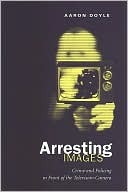Category Books
- Fiction Books & Literature
- Graphic Novels
- Horror
- Mystery & Crime
- Poetry
- Romance Books
- Science Fiction & Fantasy
- Thrillers
- Westerns
- Ages 0-2
- Ages 3-5
- Ages 6-8
- Ages 9-12
- Teens
- Children's Books
- African Americans
- Antiques & Collectibles
- Art, Architecture & Photography
- Bibles & Bible Studies
- Biography
- Business Books
- Christianity
- Computer Books & Technology Books
- Cookbooks, Food & Wine
- Crafts & Hobbies Books
- Education & Teaching
- Engineering
- Entertainment
- Foreign Languages
- Game Books
- Gay & Lesbian
- Health Books, Diet & Fitness Books
- History
- Home & Garden
- Humor Books
- Judaism & Judaica
- Law
- Medical Books
- New Age & Spirituality
- Nonfiction
- Parenting & Family
- Pets
- Philosophy
- Political Books & Current Events Books
- Psychology & Psychotherapy
- Reference
- Religion Books
- Science & Nature
- Self Improvement
- Sex & Relationships
- Social Sciences
- Sports & Adventure
- Study Guides & Test Prep
- Travel
- True Crime
- Weddings
- Women's Studies
Arresting Images: Crime and Policing in Front of the Television Camera » (1st Edition)

Authors: Aaron Doyle
ISBN-13: 9780802085047, ISBN-10: 0802085040
Format: Paperback
Publisher: University of Toronto Press, Scholarly Publishing Division
Date Published: December 2003
Edition: 1st Edition
Author Biography: Aaron Doyle
Aaron Doyle is an assistant professor in the Department of Sociology and Anthropology at Carleton University.
Book Synopsis
While most research on television examines its impact on viewers, Arresting Images asks instead how TV influences what is in front of the camera, and how it reshapes other institutions as it broadcasts their activities. Aaron Doyle develops his argument with four studies of televised crime and policing: the popular American 'reality-TV' series Cops; the televising of surveillance footage and home video of crime and policing; footage of Vancouver's Stanley Cup riot; and the publicity-grabbing demonstrations of the environmental group Greenpeace. Each of these studies is of significant interest in its own right, but Doyle also uses them to make a broader argument rethinking television's impacts. The four studies show how televised activities tend to become more institutionally important, tightly managed, dramatic, simplified and fitted to society's dominant values. Powerful institutions, like the police, harness television for their own legitimation and surveillance purposes, often dictating which situations are televised, and usually producing 'authorized definitions' of the situations, which allow them to control the consequences. While these institutions invoke the notion that "seeing is believing" to reinforce their positions of dominance, the book argues that many observers and researchers have long overstated and misunderstood the role of TV's visual component in shaping its influences.
Table of Contents
| Acknowledgments | ||
| 1 | Introduction | 3 |
| 2 | Three Alternative Ways of Thinking about Television's Influences | 13 |
| 3 | Reality Television and Policing: The Case of Cops | 32 |
| 4 | Surveillance Cameras, Amateur Video, and 'Real' Crime on Television | 64 |
| 5 | Television and the Policing of Vancouver's Stanley Cup Riot | 83 |
| 6 | The Media Logic of Greenpeace | 111 |
| 7 | Conclusions | 133 |
| 8 | Postscript: Television and Theorizing the Evolution of Criminal Justice | 146 |
| Notes | 157 | |
| Works Cited | 171 | |
| Index | 187 |
Subjects
 Media
Media  Mass Media & Crime
Mass Media & CrimeEntertainment
 Media
Media  Media - General & Miscellaneous
Media - General & MiscellaneousEntertainment
 Media
Media  Media - Theory & Philosophy
Media - Theory & PhilosophyEntertainment
 Television
Television  Television Broadcasting - Social Aspects
Television Broadcasting - Social AspectsEntertainment
 Television
Television  Television Programs - General & Miscellaneous
Television Programs - General & MiscellaneousNonfiction
 Social Sciences
Social Sciences  Criminology
CriminologyNonfiction
 Social Sciences
Social Sciences  Media & Communications
Media & CommunicationsNonfiction
 Social Sciences
Social Sciences  General & Miscellaneous
General & MiscellaneousNonfiction
 All Nonfiction
All Nonfiction  Criminology
CriminologyScience & Nature
 Social Sciences
Social Sciences  Criminology
CriminologyScience & Nature
 Social Sciences
Social Sciences  Media & Communications
Media & CommunicationsScience & Nature
 Social Sciences
Social Sciences  General & Miscellaneous
General & MiscellaneousSocial Sciences
 Criminology
Criminology  Criminology - General & Miscellaneous
Criminology - General & MiscellaneousSocial Sciences
 Media & Communications
Media & Communications  Mass Media & Crime
Mass Media & CrimeSocial Sciences
 Media & Communications
Media & Communications  Media - General & Miscellaneous
Media - General & MiscellaneousSocial Sciences
 Media & Communications
Media & Communications  Media - Theory & Philosophy
Media - Theory & PhilosophySocial Sciences
 General & Miscellaneous
General & Miscellaneous  Popular Culture Studies
Popular Culture StudiesNonfiction
 Entertainment
Entertainment  Media
MediaNonfiction
 Entertainment
Entertainment  Television
Television
